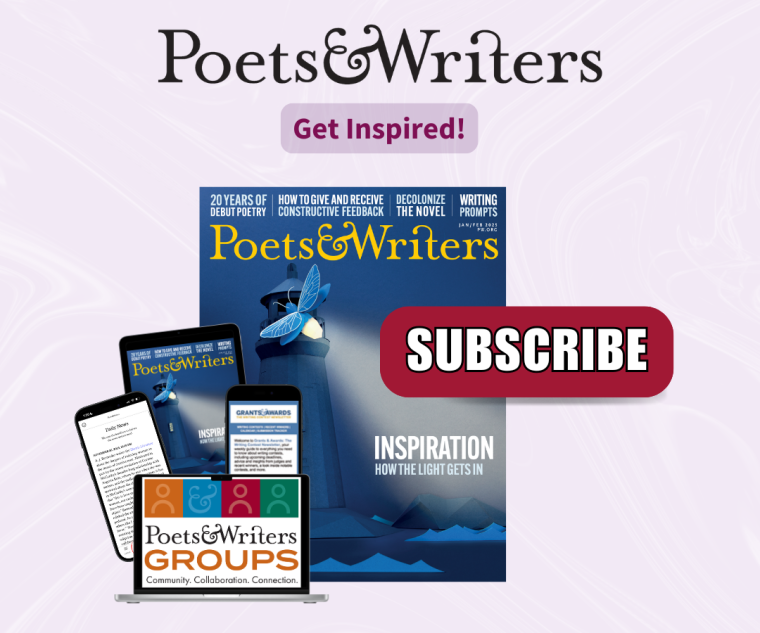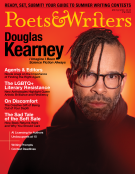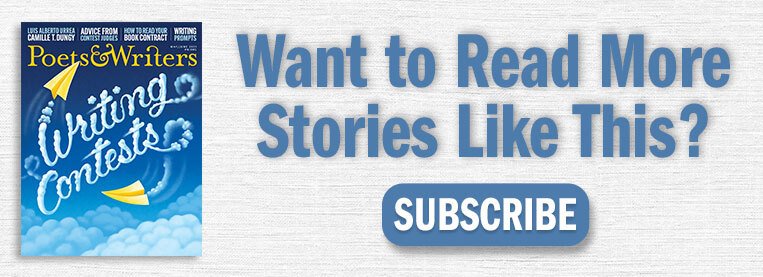Lately I have been hanging out with a lot of scientists. This is not typical for me. I went to school for English and writing, and the last science courses I took were a botany class that was purged from my brain the moment I completed the final and a geology class in an auditorium with cushy chairs and warm golden lighting that left me physically unable to stay awake. I do have fond memories of high school biology and college psychology: I loved learning about psychology, training I repurposed for trying to understand what was driving the choices of my fictional characters. And I really enjoyed dissection, a statement that tends to elicit panicked expressions from scientists with whom I thought I was bonding.
In spite of my personal limitations, for the past two years I’ve been writer-in-residence at the Wisconsin Institute for Discovery, or WID, at the University of Wisconsin in Madison. As writer-in-residence, my job is to edit nontechnical documents like articles, op-eds, and donor reports, but mostly to immerse myself in the scientific goings-on. I visit labs and interview scientists; I attend lectures and seminars that every now and then I comprehend. And I write, looking for the ways this immersion can show up in a novel or an essay or anything else this experience inspires. Some writers come to WID to research a specific project, but I happened to arrive after finishing one and before starting the next, which is both freeing and frightening. I can use this experience any way I like, but I am always nervous about a project until I figure out what story I’m telling.
The whole idea of WID is one of interdisciplinary research, which is why, for instance, one lab will build tiny silica nanocapsules to deliver another lab’s gene therapies, or create the minuscule polymer structures needed to provide architecture to the tiny heart or nerve tissues another lab is growing. There are fellowships pairing artists and scientists to create projects like microbiology coloring books or public murals about scientific concepts. And, of course, there is a writer walking around the place—which makes for interesting conversation with scientists who have creative pursuits of their own, as varied as mystery novels and violin. The whole idea is to provide an atmosphere of cross-pollination and allow the participants to decide where it leads.
The institute sounds like a utopia, but being here was stressful at first, in ways I had not expected. I am used to English-major housing: old brick buildings and forays into brutalism. I felt a little intimidated by this building’s brightness and plant life, its lab windows showing centrifuges and microscopes and huge barrels of nitrogen. (Science money, not English department money.) I am far more used to the DIY world of lit mags and my own unglamorous writing practice. (A photographer once arrived to take a photo of my personal writing space, and when I shamefacedly showed him the empty spare room where the magic happened, he took a step backward, as if he’d glimpsed a limp foot poking out of the closet.) Initially I occupied my new office tentatively, uncertain if I was meant to be here at all. I left the open shelving and bulletin boards empty except for a laptop and coffee mug, until an offhand remark from one of my colleagues—“Boy, you’ve really made this place your own”—made me realize my office space communicated less “humble creative” and more “lurking recluse.” I started bringing in plants and photographs and things I wanted to look at while I wrote, things to remind me that this once-unfamiliar place is now my territory.
I asked whoever I came across if they’d mind chatting with me, and the vast majority were generous with their time, walking me through color theory and visual perception, polymers and parasitology. It is no exaggeration to say that the research of these scientists is often so distant from my own expertise in anything at all that I find myself refreshing my memory of cell structures and genetics in order to grasp not the nuances, but the basics. When I was asked to introduce a seminar for a lab that merges tissue engineering with stem cell research, I spent many, many days’ labor on my ten-minute intro, reminding myself that I’d agreed to write the introduction for the same reason I agreed to come to WID: When I am offered opportunities that intimidate me, I say yes before I can say no.
The experience of starting at the very basics is a sea change when you’re on the dark side of your forties and accustomed to moving through circles you understand quite well. That was the unexpected benefit of this experiment: It made me realize how long it has been since I got dropped into the deep end of something brand-new. Most of us forget to do that after a certain age. I have been immersed in writing and teaching and editorial work for decades at this point, and while that field always has more to teach me, the terrain is also familiar. I might try new cuisines or recipes, but I feel confident that I can cook. New friends have come around, but my treasured old friends now go so far back they can still make fun of my high school hair. Maybe this is why I was starting to feel a restlessness in my writing that suggested I wanted some new topics, or a new canvas for the topics that eternally interest me. It’s unsettling not to know where this exploration is taking me. But don’t we all, at some point, resist that settled, familiar feeling? Sometimes that restlessness happens organically, and sometimes it is jump-started by the unexpected. It’s going to be uncomfortable either way.
The closest analogue to this experience is becoming a parent—but even that is comprehensible, insofar as people talk about it endlessly enough that the terrors of labor and infant care felt somewhat foreseeable.
When I arrived I knew nothing at all about the career path of a scientist or how a lab works. I asked the most basic questions I could, simply to understand who does what and when. My last novel, which was set in the wine industry, also required months of research, which taught me the lessons I’ve used here: The best research is talking to people; you have to let conversations go where they need to; and people tend to enjoy explaining their work to an interested party. Also, I consider one of the prerequisites of an editor to be a willingness to ask silly-sounding questions, which came in handy as I realized how very little I had retained from high school chemistry. But I also have questions now that I wouldn’t have thought to ask at seventeen, and I’m old enough that I’m no longer afraid to ask them. This morning I listened to a chemist explaining his research into the origins of life, and I found myself looking at the images of organic compounds and wondering, Wait, how did we even arrive at these representations? What precisely do they represent, a theory or a direct observation? For the first time I found myself thinking about the thousands of experiments that pieced in knowledge crumb by crumb, all of which had to happen before we ever got to, say, a chemistry teacher jotting some O’s and H’s connected by lines on a whiteboard.
I have not been so out of my depth in years. It’s thrilling. It made me realize that for years my feet had been inscribing the same circles into the earth, over and over, and it was time to swerve in more ways than one. It had been a while—maybe forever?—since I just asked questions with no idea what the answers would be.
I let topics slide if they didn’t grab me and returned to the ones that did. Why was I so intrigued by the nuances of how we perceive texture and color saturation? Because when we take in stimuli—say, a bright sign telling you what to do in a fire—in nanoseconds, we’ve used that stimuli to make critical judgments about their meaning. How far can an image be stripped of detail before the brain ceases to recognize the object? Shockingly far. I am still unsure why I want to learn about the Buddhist state of tukdam, but does anyone have to justify an interest in people who die and yet do not decompose for weeks? I have believed for years that the writing classes I teach to palliative-care physicians have meaning and worth, but a neuroscientist’s research showed me exactly why this writing and sharing was valuable in scientific terms.
One of the events I arranged last year was a series of conversations between scientists and writers, just to facilitate research, ask questions, and hear how other people see the world and their work. I had some sense of what they might experience: how few of their assumptions are true, how differently someone else sees the world, but also how similar the creative work is across different fields. Basically everyone experienced the kind of nervousness and displacement that I had come to know so well. I don’t know what those writers did with their conversations—it’s not my place to direct it—but I trust that it will be useful in some unexpected way. If you can bear the unease of engaging with some field or material totally new to you, I trust it will be useful to you as well—as a writer and as a person.
Somewhere along the way my own research began to gel. A few specific topics started to germinate, ideas I would not have considered without this experience. I’d love to tell you I know exactly where this novel is headed, but I’m not sure yet. I tell myself I’ve learned to wait it out and keep working.
Being in this building, considering the work being done here, has made me think more deeply, differently. In the same way writing forces me to articulate a state of being that may have previously existed only as a generalized cloud of idea, feeling, and association, these wildly unfamiliar topics have invited me to reconsider what I know and how I know it. It’s discomfiting, destabilizing—as transformative experiences are.
Michelle Wildgen is the author of four novels, most recently Wine People (Zibby Books, 2023), and editor of the anthology Food and Booze: A Tin House Literary Feast (Tin House Books, 2006). Her work has appeared in the New York Times Book Review and the Modern Love column; O, the Oprah Magazine; the Best American Food Writing series; and other anthologies and journals. She is a cofounder of the Madison Writers’ Studio and is currently the writer-in-residence at the Wisconsin Institute for Discovery at the University of Wisconsin in Madison.
Thumbnail credit: Nick Wilkes







